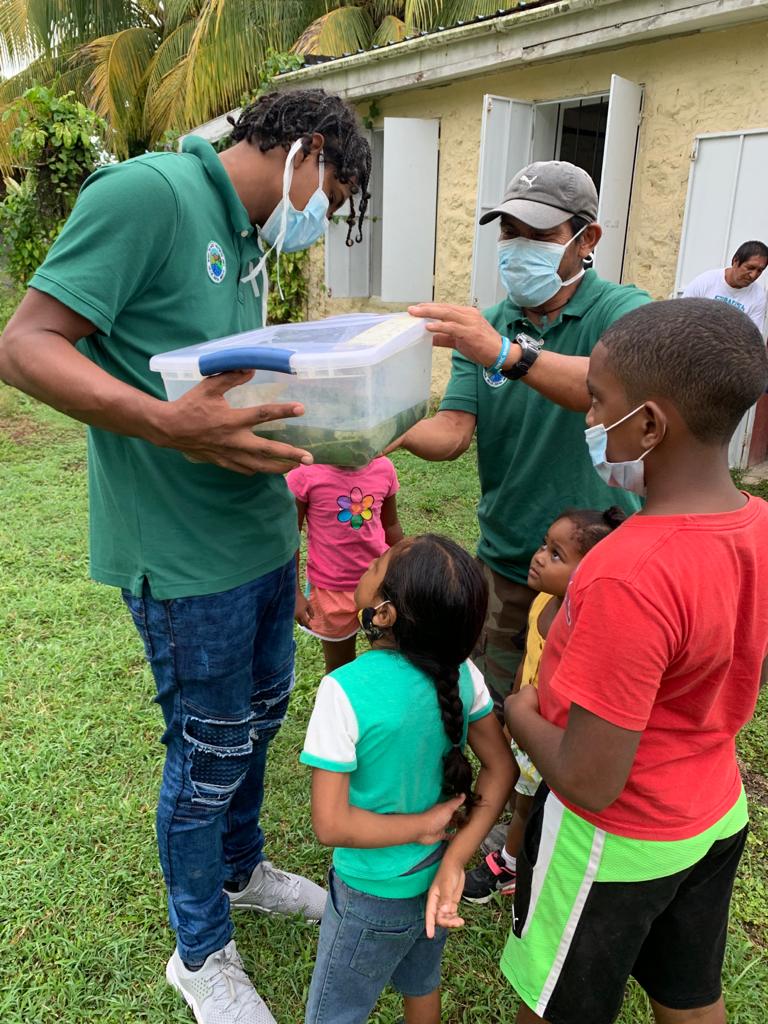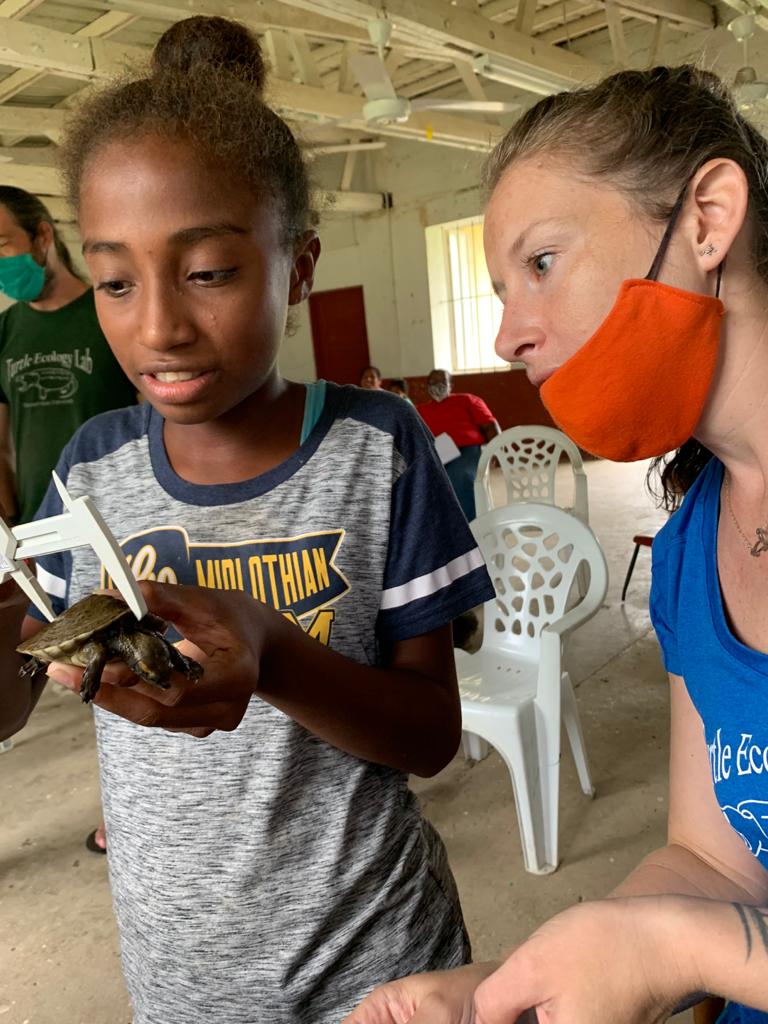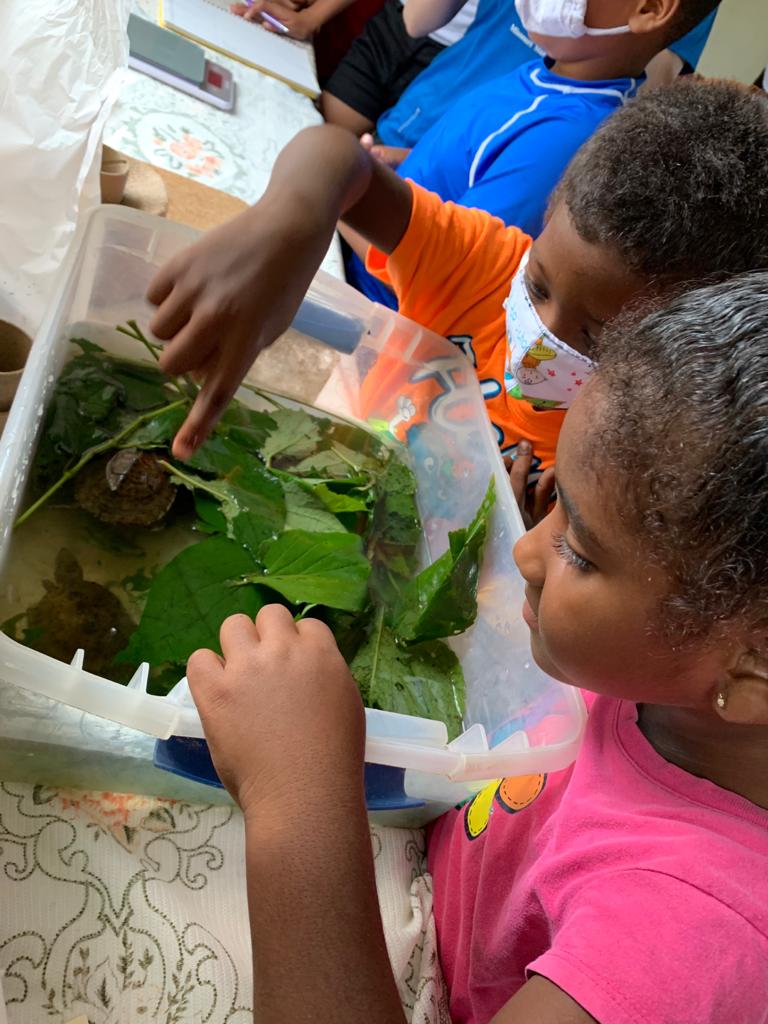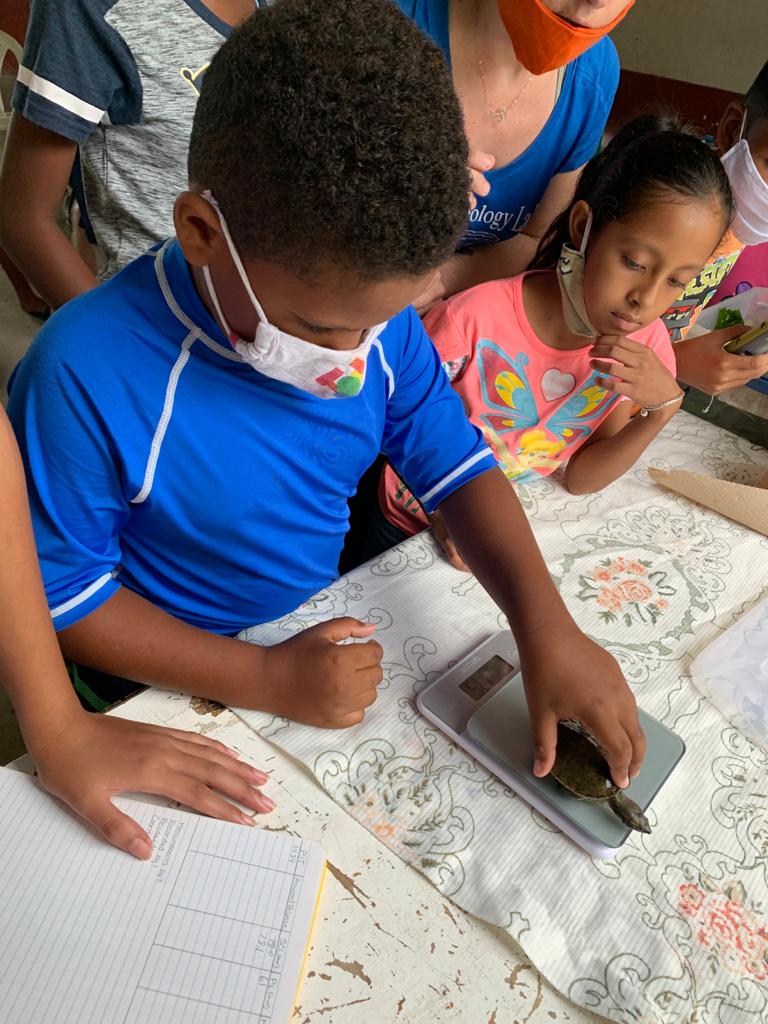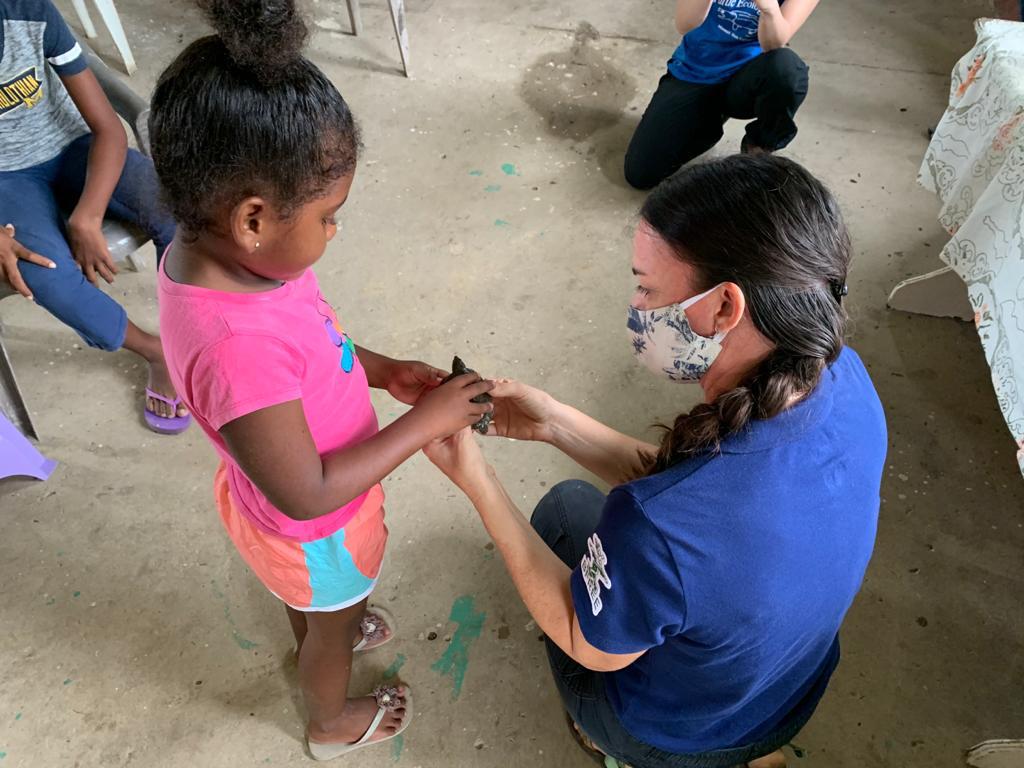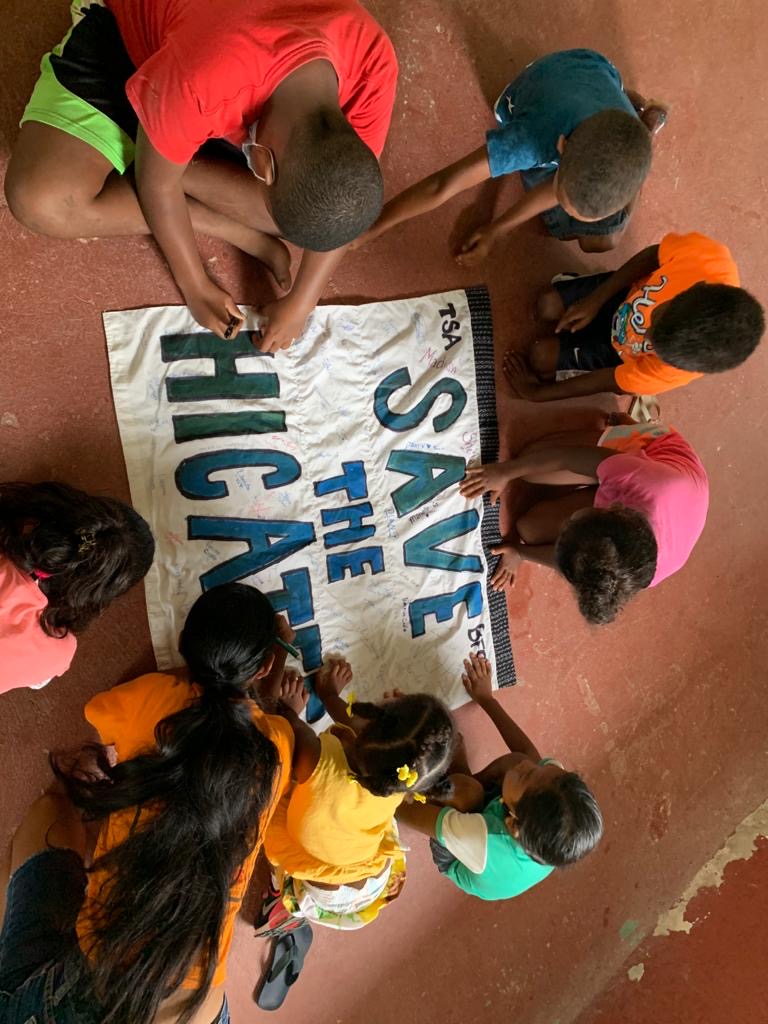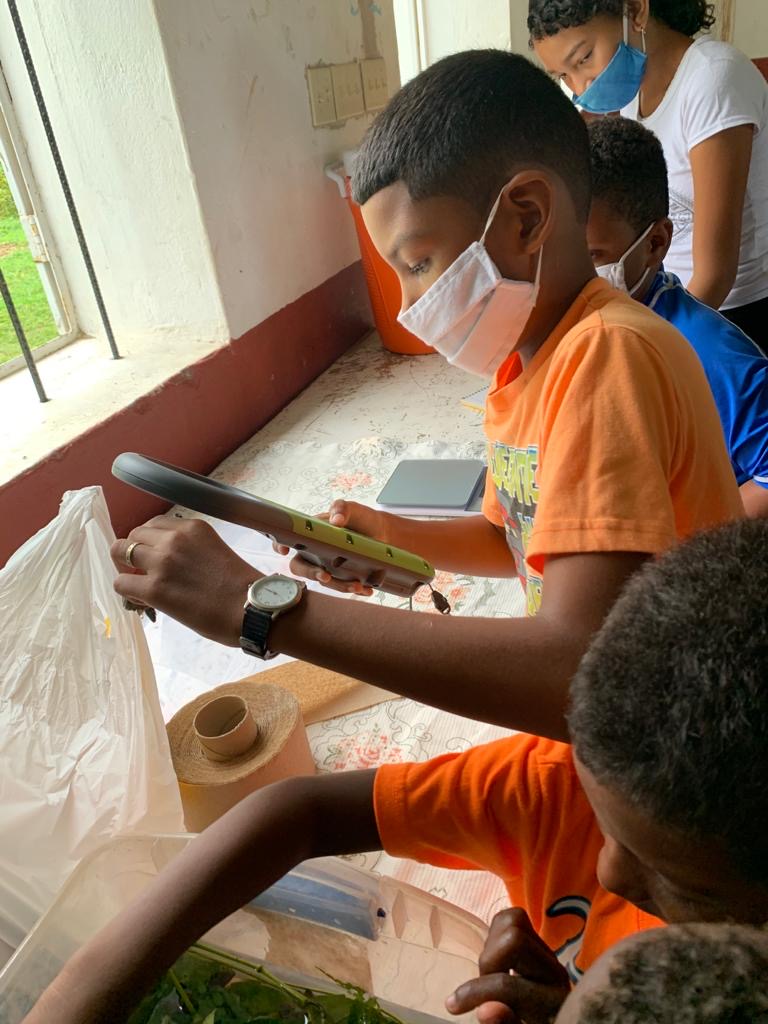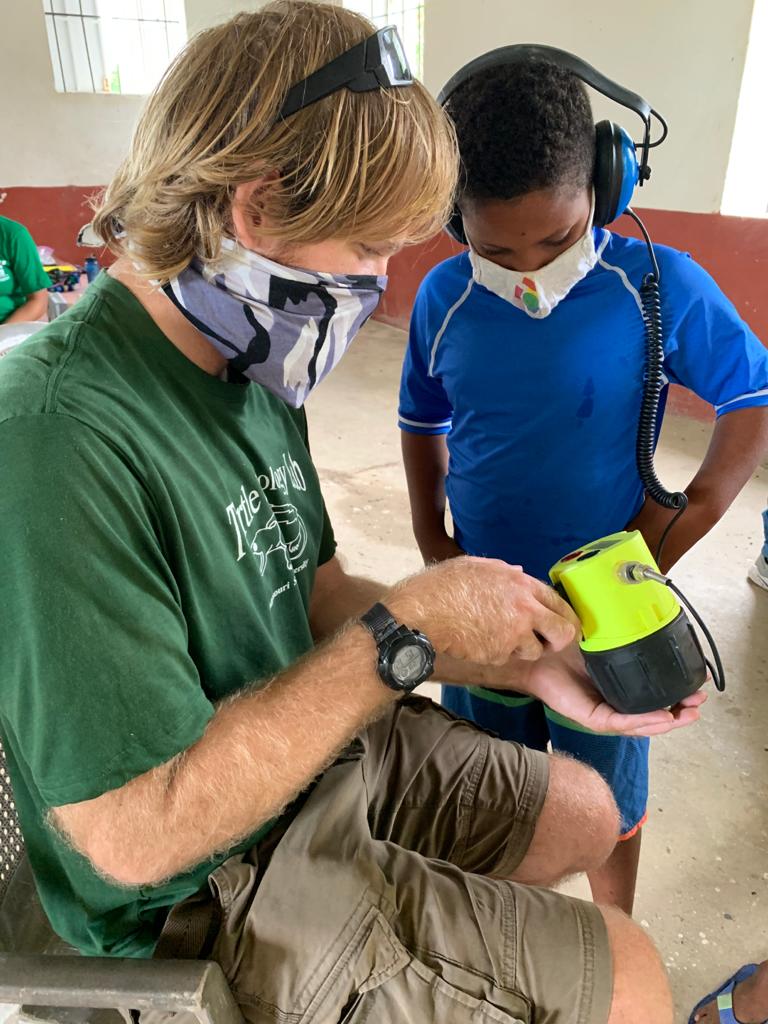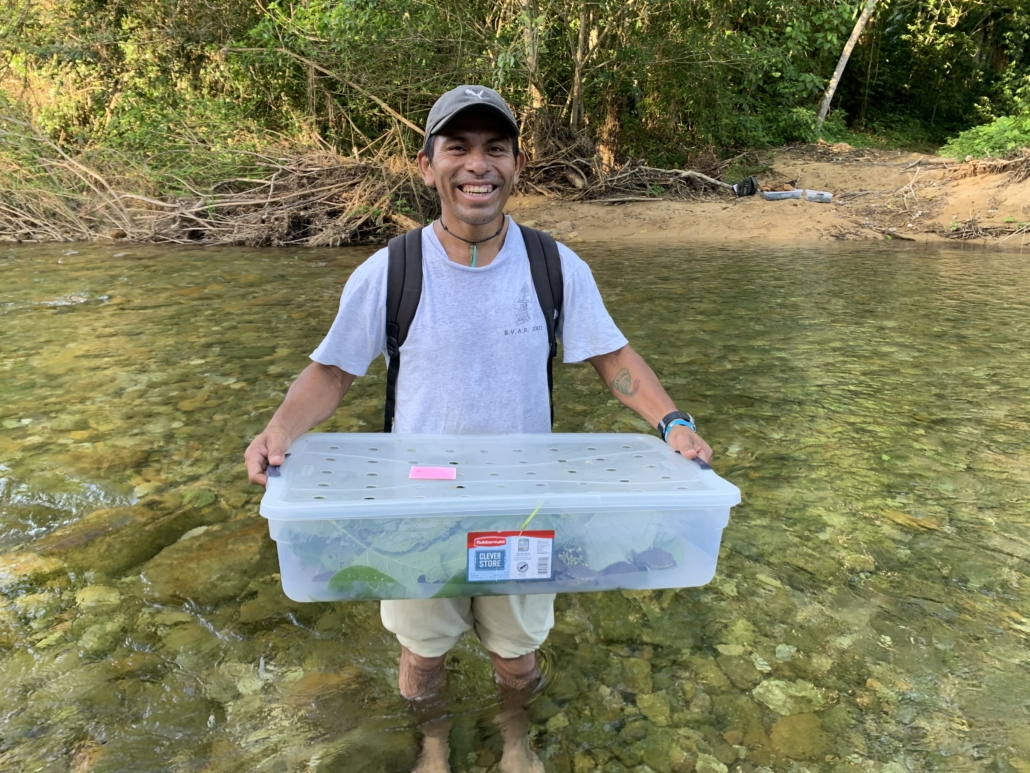Our Presence Matters
/0 Comments/in Blog, Uncategorized /by Heather Barrett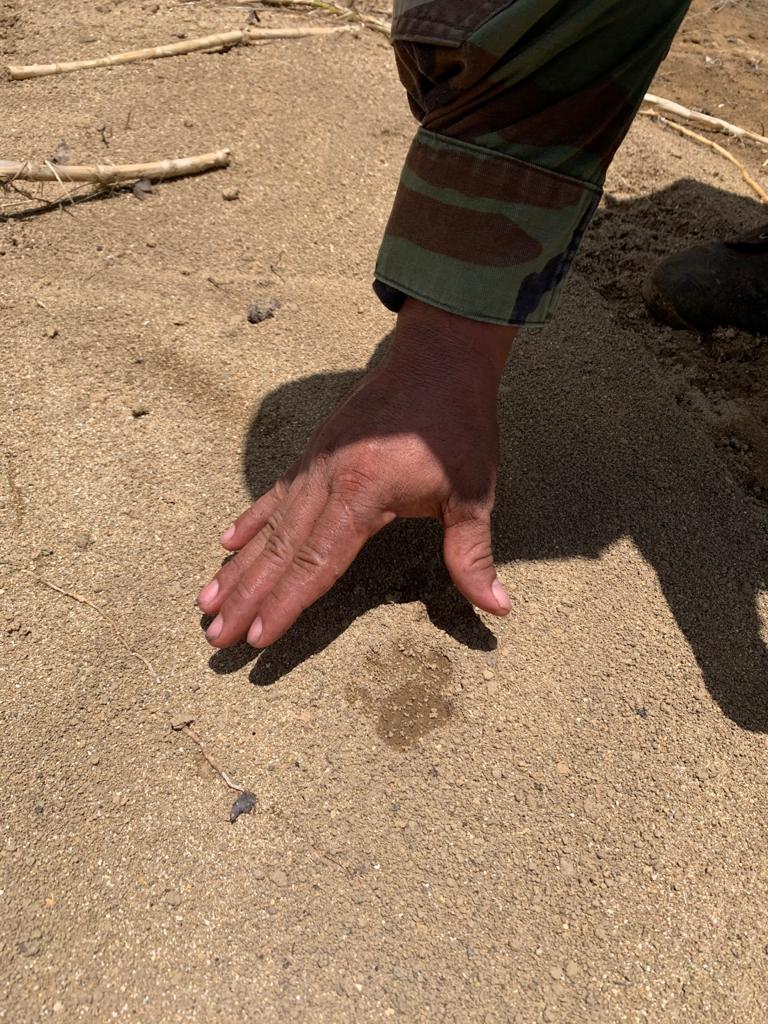
Around the world, the question is being asked: How does the pandemic impact threatened species and protected areas? The answer seems to be a resounding: We don’t know, but we suspect in some good ways and some bad ways. Wildlife and protected areas are likely benefited by less human presence and disturbance and also negatively impacted by unregulated use and illegal resource extraction including illegal poaching.
We know that the pandemic has led to the closure of many protected and conserved areas around the world. The consequences of closed protected areas are many and include staff layoffs and loss of livelihoods, suspension of critical research and monitoring programs, suspension and or decrease of ranger patrols resulting in possible illegal and environmentally damaging activities.
In Belize, both terrestrial and marine protected areas have seen periods of closure in short bursts since the pandemic was declared in April. The additional stress of dry season fires in April and May across the country and the early advent of hurricane season has made these challenges even greater. Protected Areas staff struggle to continue responding to these natural disasters while also continuing their daily work with less mobility due to Covid-19 restrictions and fewer staff.
At BFREE, our park rangers feel the stress of those restrictions yet maintain their important tasks in spite of the challenges. Throughout the pandemic, they have continued to come to work 24/7, patrolling the 1,153 acre property and its boundaries which connect us to nearly 1.5 million acres of lowland tropical rainforest.
Rangers and BFREE staff have also continued to document wildlife and weather patterns as part of our long-term monitoring programs. We are entering our fifth year of an Agami Heron nesting population study in collaboration with the international Agami Heron Conservation Working Group. In partnership with Jungle Encounters, Inc, we continue to collect data on wild cats, specifically Jaguarundis, Ocelots and Margays, using camera trapping technology. Weather data has been collected since 1995 and continues both in hand-written form and via Hoboware weather stations situated throughout the property. Additionally, observational data is collected on the movements of Scarlet macaws and Harpy eagles in the area.
Monitoring wildlife will help us understand which animals utilize which pieces of the property and whether their populations are increasing, remaining stable or declining. Similarly, monitoring weather helps us understand how Belize’s climate changes over time.
By continuing to do the important work of patrolling the BFREE privately protected area and monitoring wildlife and climate, we not only protect the land around us, we contribute important information that helps better guide conservation policy and interventions over the long-term.
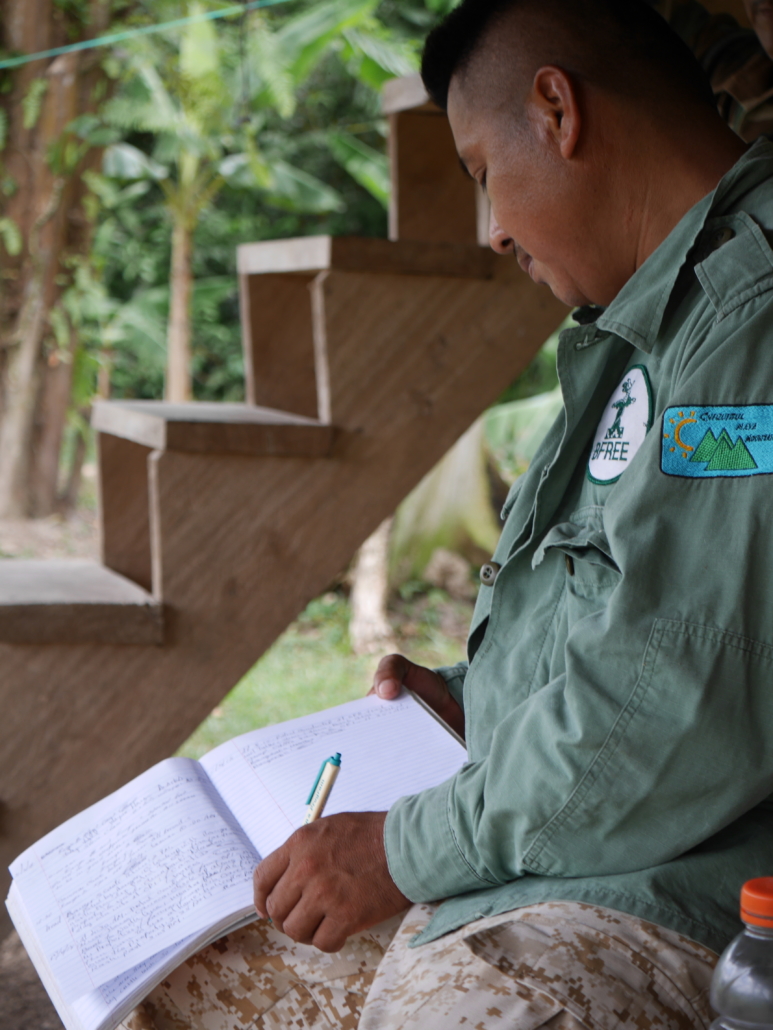
Canti records patrols and wildlife sightings in the logbook at OP1 
Canti points out erosion due to flooding along the Bladen River at BFREE 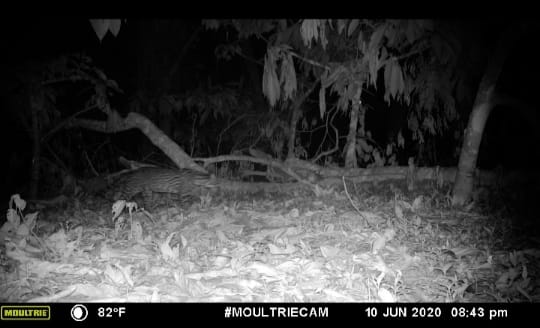
Jungle Encounters camera trap image of a Margay at BFREE 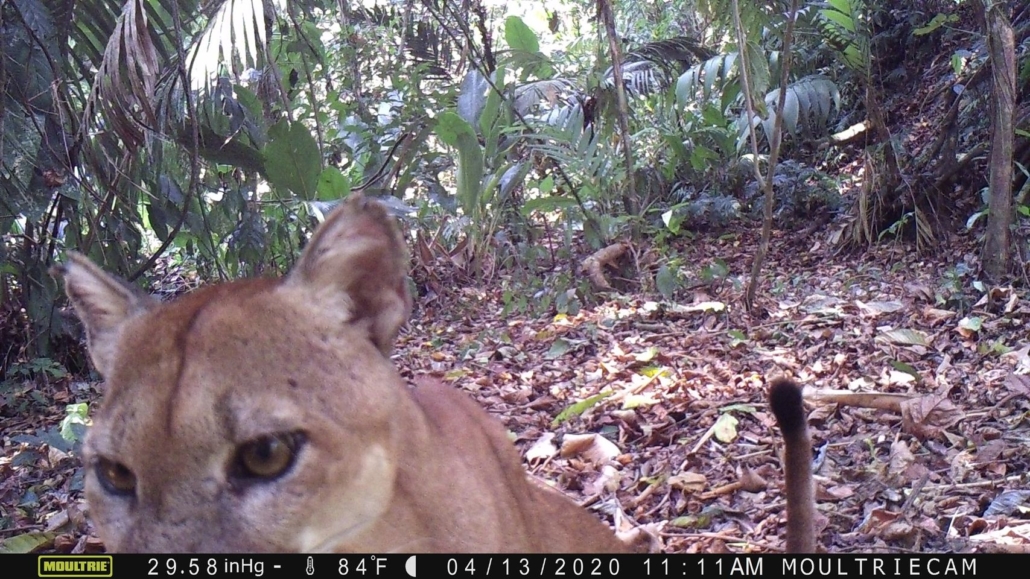
Jungle Encounters camera trap image of a Puma at BFREE 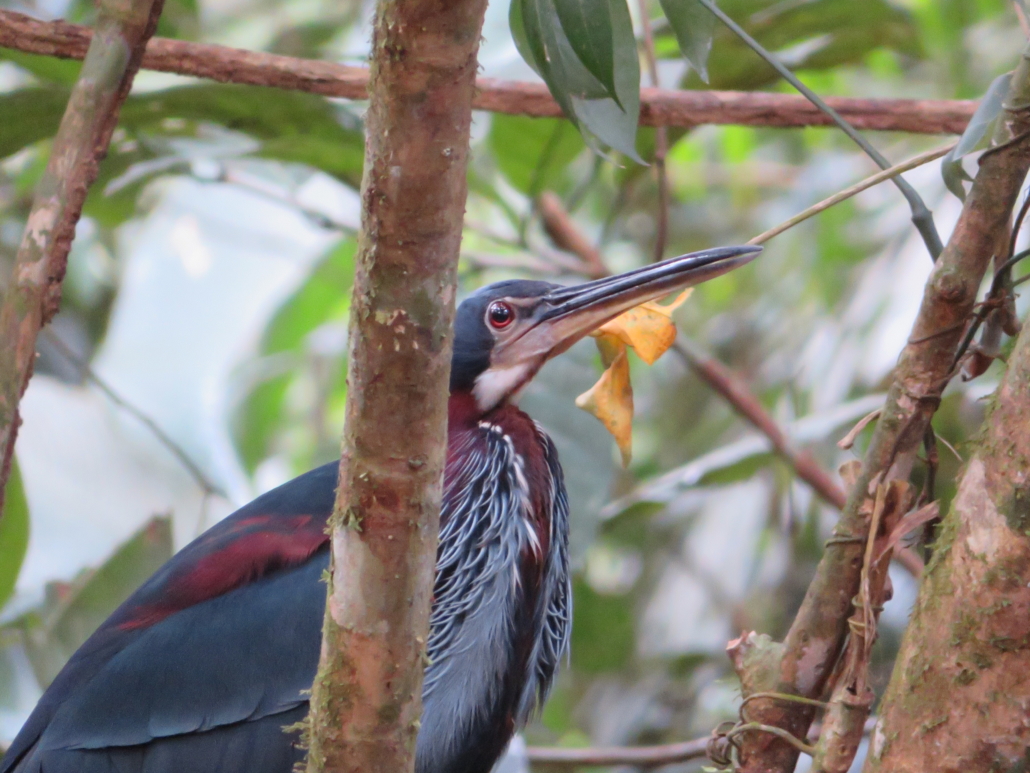
Agami heron 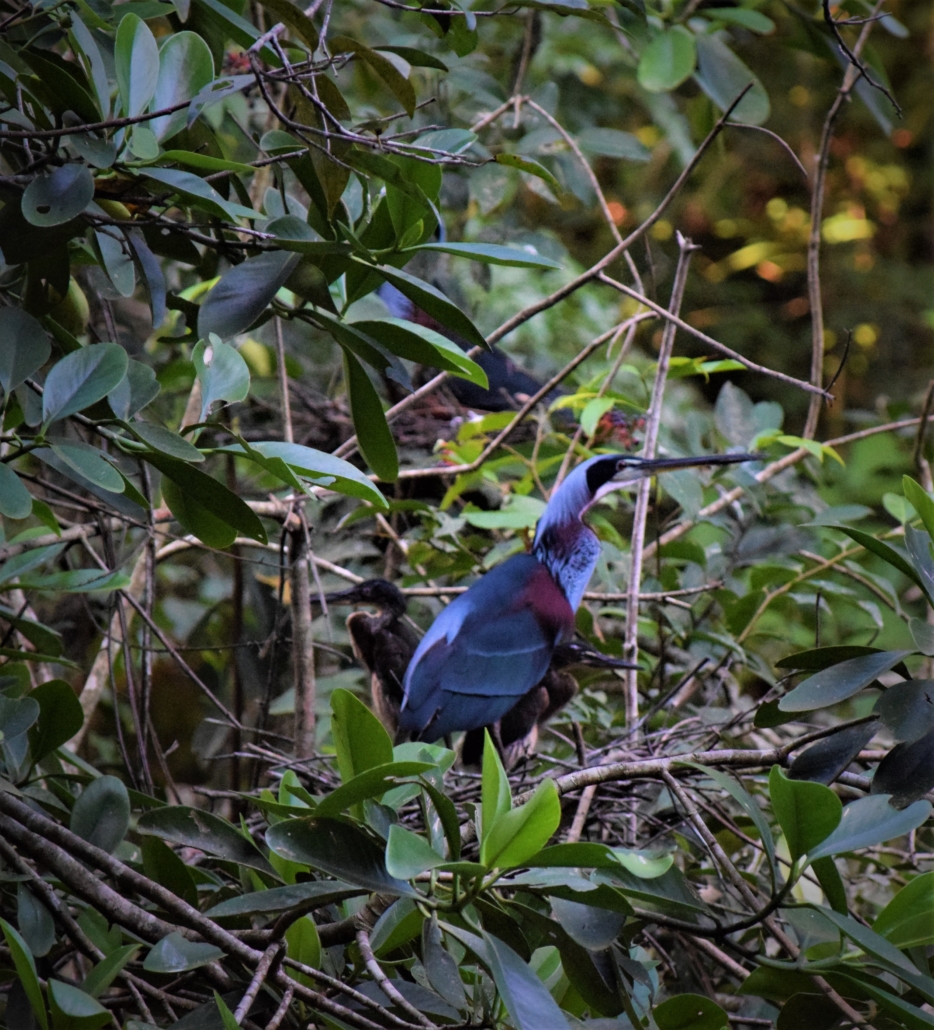
Agami heron and two fledglings
Releasing Hicatee with Belize’s Next Generation
/0 Comments/in Blog, Uncategorized /by Heather Barrett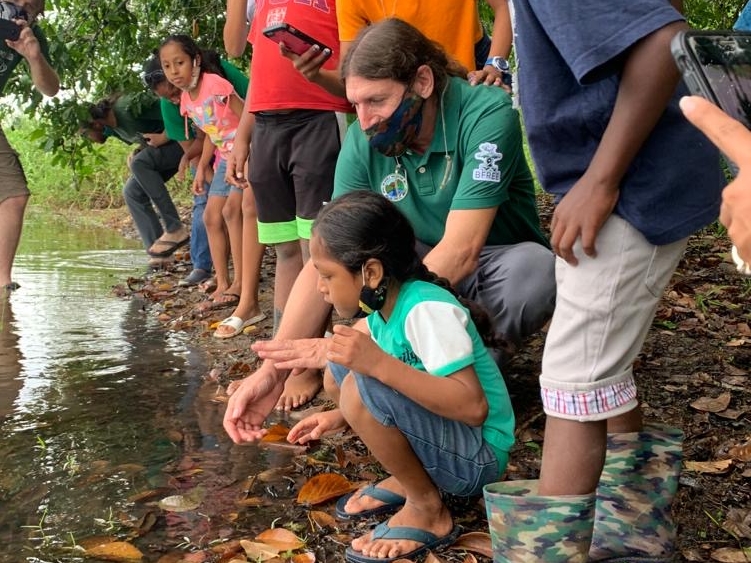
Six years after the first Hicatee egg was laid and hatched at the Hicatee Conservation and Research Center (HCRC) at BFREE, we released 145 hatchlings turtles into the wild – representing the first significant release of captive bred and hatched Hicatee in Belize. The release not only provided the opportunity to increase the wild population, but also and most significantly to conduct a comparative early-life stage growth study of the 2020 cohort of 185 Hicatee hatchlings. Turtles were randomly assigned groups which were then designated for 1) release into a natural closed aquatic system with no other Hicatee present, 2) release into a natural closed aquatic system where other Hicatee are present, 3) release into an natural open aquatic system where other Hicatee are present, 4) release into the HCRC rearing pond at BFREE, and 5) kept in tanks indoors at the BFREE lab. After, eight weeks, turtles are recaptured, weighed, measured, and data collected on a number of parameters to compare the conditions of each group to determine overall health.
One of the release sites located adjacent to a wildlife sanctuary a nearby village provided the opportunity to get local community members involved. Representatives from BFREE, Belize Turtle Ecology Lab, and the Belize Fisheries Department met village leaders and a small group of school children one morning in early August. The organizations introduced the community to the captive-breeding program taking place at BFREE, presented on current Hicatee research, reviewed Belize’s laws pertaining to Hicatee, and described current outreach efforts including the upcoming fourth annual Hicatee Awareness Month in October. After the presentation, the group walked to the river’s edge where they released a dozen of the critically endangered captive-bred turtles into the wild.
The release and the associated outreach event represent a major milestone in our ongoing effort to save the Hicatee turtle from extinction. These milestones could not have been reached without the ongoing support of our project partner, the Turtle Survival Alliance. Their belief and engagement in Hicatee conservation efforts has allowed the project to continue moving forward even in the most difficult of times.
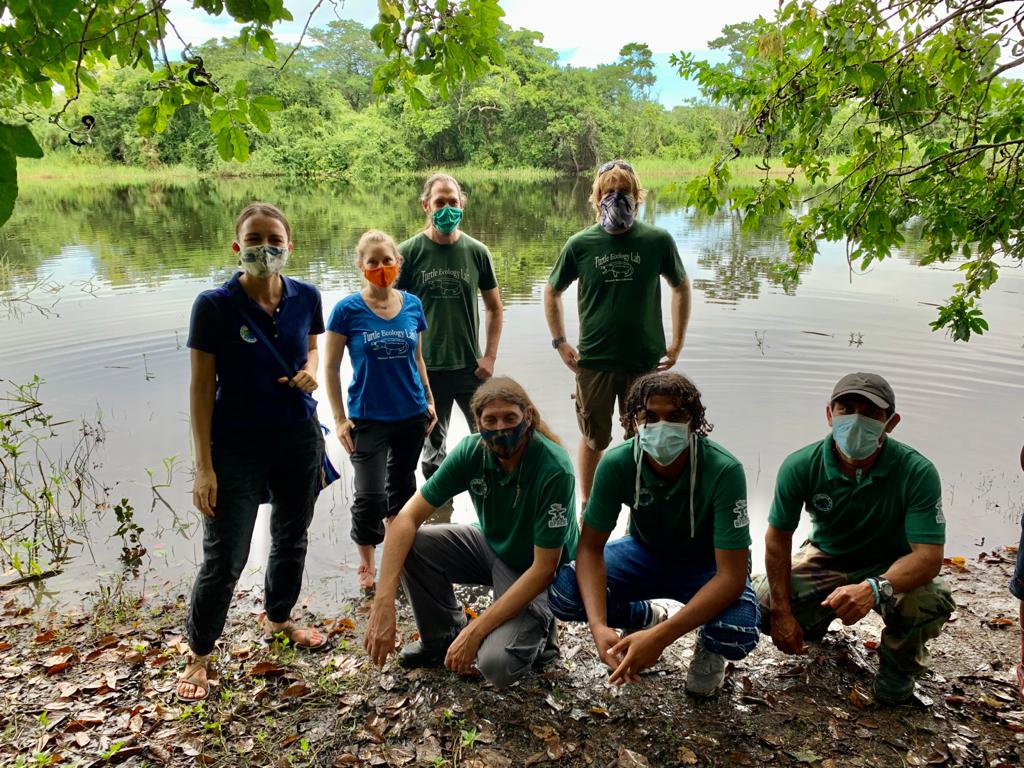
Growing the BFREE Fellowship Program
/0 Comments/in Blog /by Heather BarrettNow in its third year, the BFREE Science and Education Fellowship program’s goal is to provide opportunities for exceptionally qualified early-career conservationists. Current Fellows are Lenardo (Leo) Ash who has been assigned to work in the cacao agroforestry program and Jonathan Dubon who is assigned to work at the Hicatee Conservation and Research Center (HCRC).
As Fellows, they learn all aspects of the general operations of their assigned program and are additionally responsible for data collection, research and reporting. The Fellows also have the opportunity to work directly with visiting researchers and field course groups from Belize and abroad. One of Jonathan’s goals in the coming months is to help to improve and organize the extensive database for the HCRC and to help implement better protocols for data collection, recording, storage and use. This is a much-needed and critical task as we continue to gather more information on our existing and ever-growing population of Hicatee turtles.

Leo Ash, Year-Two Cacao Agroforestry Fellow 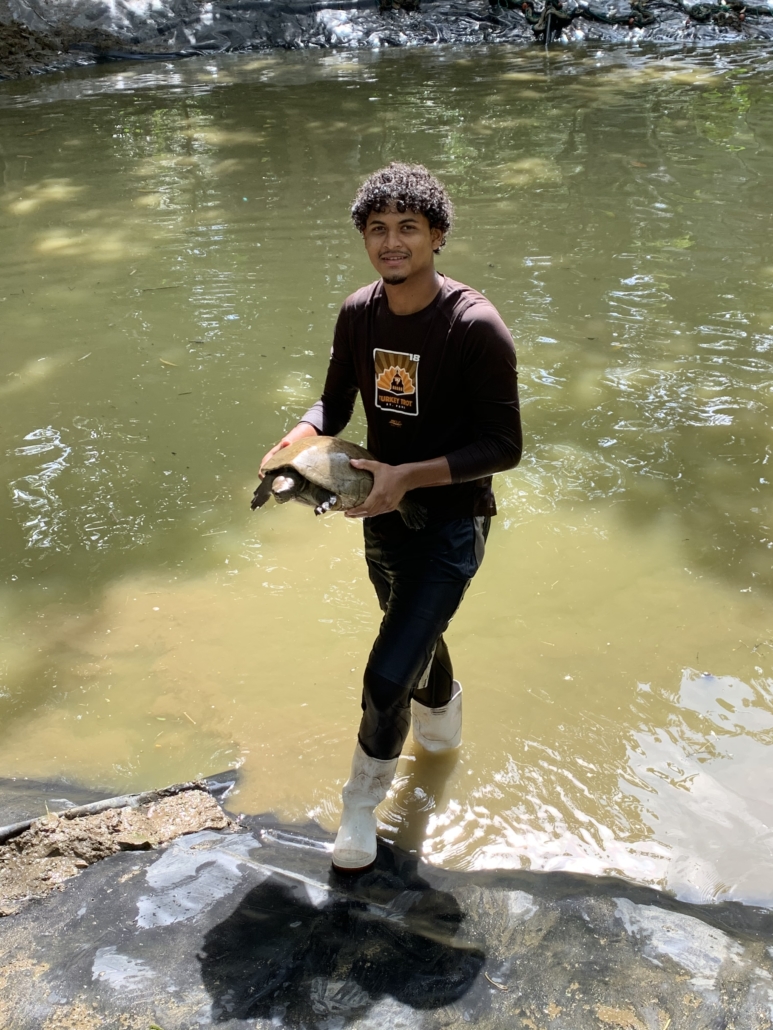
Jonathan Dubon, Year-One Hicatee Conservation Fellow
As with all things, the pandemic has greatly changed our plans for the 2020 Fellowship Program; without visitors to the field station, there are less opportunities to gain fresh perspectives. We’ve tried to use the time to take advantage of the resources we have in front of us. Along with other staff, Fellows are participating in Herpetology 101 and under Jacob Marlin’s tutelage, are learning to name and identify the many reptiles found around BFREE. Also, Fellows are developing research projects in their area of work which they will focus on over the next year.
We are excited and motivated by these young conservationists. Their interest inspires us to dream bigger. Our goal is to grow this program in the coming years, so that more Belizeans can participate and receive specialized training at BFREE.
The Fellows take their roles seriously and look forward to making the most of the opportunity while gaining critical skills along the way. When asked what it means to be a next-generation environmentalist in Belize, Leo thoughtfully replied, “I believe it means understanding current issues affecting the planet, and helping to make changes before they become irreversible.
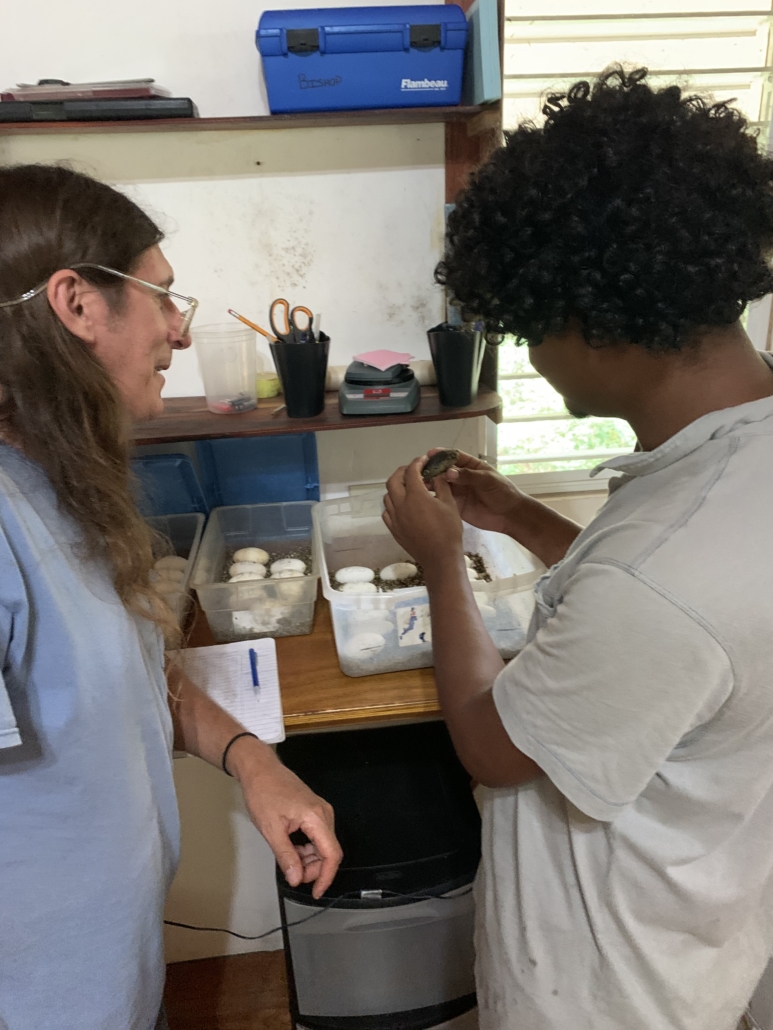
Jacob and Jonathan examine Hicatee hatchlings. 
Jonathan holds a toad found along the trail. 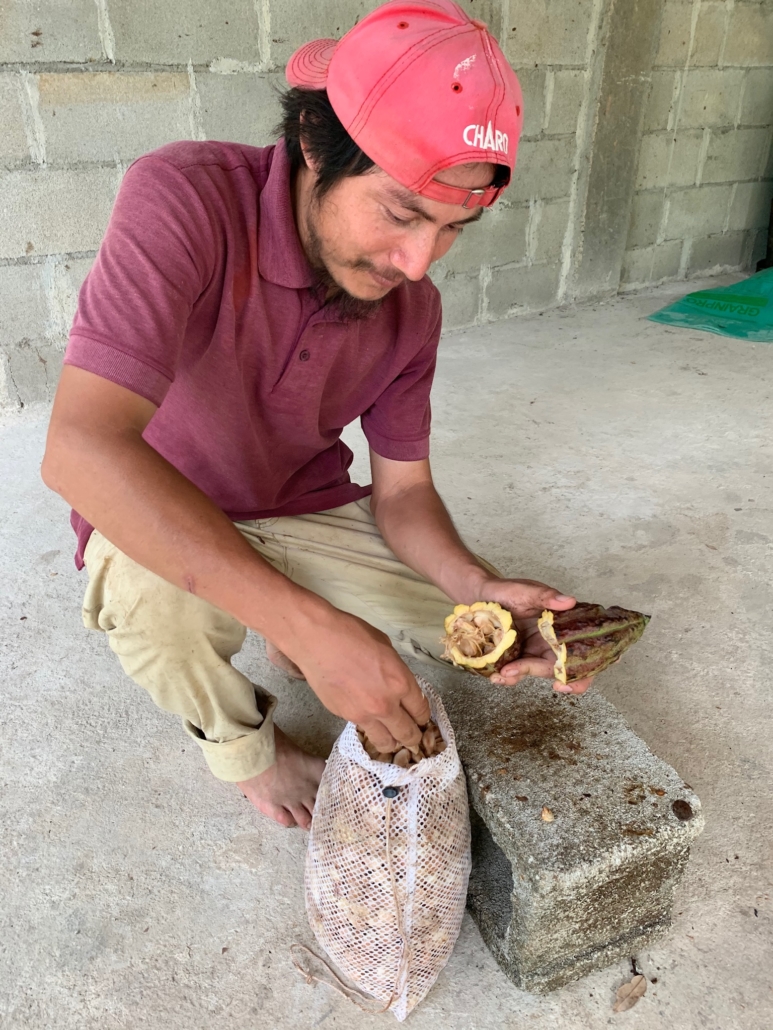
Leo with fermented cacao seeds. 
Leo grafting cacao sapling.

